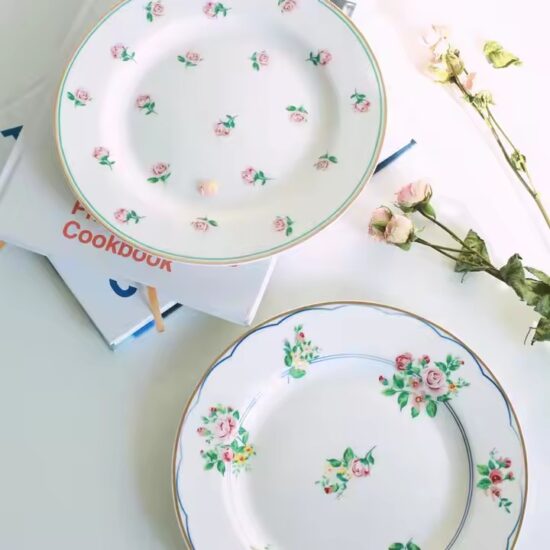bob@nbdho.com
Handmade vs. Machine-Made Ceramic Plates: Key Differences Explained
Handmade vs. Machine-Made Ceramic Plates — What’s the Difference?
Introduction
When sourcing ceramic plates for retail, restaurants, or hospitality, one major decision is whether to choose handmade or machine-made ceramics. While both serve the same functional purpose, they differ significantly in production techniques, aesthetic appeal, cost, and consumer perception.
In this article, we break down the core differences between handmade and machine-made ceramic plates, helping you make an informed decision based on your brand’s needs and market positioning.
1. Production Process
Handmade Ceramic Plates
-
Made using traditional methods such as hand throwing, slab rolling, or hand molding
-
Each plate is individually formed by an artisan
-
Slight variations in shape, size, and texture are common
-
Often involves more time per unit and smaller batch sizes
Machine-Made Ceramic Plates
-
Mass-produced using hydraulic presses, molds, or jigger-jolley systems
-
Plates are uniform in size, shape, and weight
-
Ideal for large-scale production and wholesale orders
-
Faster turnaround time and consistent output
2. Appearance and Design
Handmade:
-
Each piece is unique, with visible human touchmarks
-
Glazes may vary slightly in tone or flow
-
Perfect for artisanal or rustic table settings
-
Often used for boutique restaurants, handmade collections, or artistic giftware
Machine-Made:
-
Uniform surface and perfect symmetry
-
Precise glaze application and design reproduction
-
Ideal for formal dining settings, hotel use, or retail chains
-
Can include printed patterns, decals, or custom branding with high precision
3. Durability and Functionality
-
Machine-made plates are typically more durable, especially those made for commercial use. Their uniform density and controlled firing reduce the risk of cracks or warping.
-
Handmade plates can be durable too, but their performance depends heavily on the artisan’s skill and the firing technique used.
-
For high-use environments (e.g., hotels, cafeterias), machine-made is usually preferred.
4. Price Point
-
Handmade plates usually come with a higher price tag due to labor intensity and artistic value
-
Machine-made plates are more cost-effective for large quantities and consistent supply
-
Custom handmade plates are often seen as luxury or limited-edition items, adding perceived value in niche markets
5. Customization Options
-
Handmade ceramic plates offer full customization in shape, texture, and glaze—ideal for designers or boutique brands
-
Machine-made plates allow mass customization (e.g., logo printing, color matching, standard shapes), which suits brand uniformity across franchises or wholesale orders
6. Sustainability and Ethical Value
-
Handmade ceramics are often associated with slow craft, local production, and sustainability
-
Many consumers appreciate the ethical, artisanal appeal of handmade items
-
Machine-made ceramics are more energy-efficient per unit but often produced in large industrial settings
7. When to Choose Handmade vs. Machine-Made?
| Purpose / Customer Type | Recommended Type |
|---|---|
| Boutique retailers | Handmade |
| High-end restaurants | Handmade or hybrid |
| Hotels / Chain restaurants | Machine-made |
| Giftware / Custom art lines | Handmade |
| Mass retail / Supermarkets | Machine-made |
Conclusion
Choosing between handmade and machine-made ceramic plates depends on your business goals, target customers, and product positioning. Handmade plates deliver uniqueness, craftsmanship, and artistic charm—perfect for premium or bespoke offerings. Machine-made plates offer reliability, consistency, and scalability—ideal for volume orders and commercial use.
At [Your Company Name], we offer both handmade and machine-made ceramic plates, fully customizable for your brand, restaurant, or wholesale project. Contact us today to explore your options.

